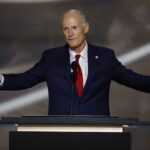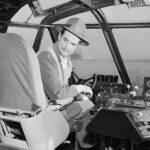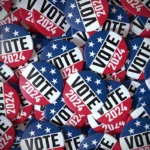Hey there, rebel without a cause! Remember when Harley-Davidson was the ultimate symbol of American freedom and badassery? Well, buckle up, because we’re about to take a wild ride through the company’s 120-year history. From its humble beginnings to its rebellious heyday, and then… record scratch. What happened? How did this iconic brand go from leather-clad outlaws to desperately chasing the “woke” crowd? Get ready to rev your engines as we explore the twists and turns that nearly drove Harley off a cliff. It’s a cautionary tale of what happens when a brand loses sight of its roots and tries too hard to be hip.
The Rebellious Origins of an American Icon (1903-1969)
When you think of Harley-Davidson, images of leather-clad rebels and the thunderous roar of V-twin engines likely come to mind. But how did this iconic brand become synonymous with freedom and rebellion? Let’s rev up our engines and take a ride through the early history of this American legend.
From Humble Beginnings to American Icon
It all started in a small Milwaukee shed in 1903 when William S. Harley and Arthur Davidson built their first motorized bicycle prototype. Little did they know that this modest creation would spark a revolution in American motorcycling. By the 1920s, Harley-Davidson had become the largest motorcycle manufacturer globally, thanks to their powerful and durable V-twin engines.
Riding Through Wars and Economic Turmoil
Harley Davidson’s history is intertwined with America’s own story. During both World Wars, the company supplied motorcycles to the U.S. military for dispatch and reconnaissance missions. This not only boosted production but also solidified Harley-Davidson’s reputation as a symbol of American strength and resilience.
The Birth of a Rebel Icon
In the post-war era, Harley-Davidson experienced unprecedented growth. The brand became a favorite among diverse groups, from police forces to outlaw motorcycle gangs. But it was in the 1950s and 60s that Harley-Davidson truly cemented its rebellious image. Hollywood movies like “The Wild One” and “Easy Rider” portrayed Harleys as the ultimate symbol of counterculture and nonconformity.
As you dive into Harley Davidson history, you’ll find a tale of innovation, resilience, and the unbreakable American spirit. It’s a story that continues to inspire riders and rebels alike, proving that Harley-Davidson finance isn’t just about motorcycles – it’s about funding a legacy of freedom on two wheels.
Expanding Production and Going Public (1969-1990)
As the motorcycle market evolved rapidly in the late 1960s and early 1970s, Harley-Davidson found itself facing stiff competition from overseas manufacturers. The introduction of powerful Japanese bikes like the Honda CB750 in 1969 marked a turning point in the industry, forcing Harley to adapt or risk falling behind.
Ramping Up Production
To keep pace with growing demand and international rivals, Harley-Davidson expanded its production capabilities. The company invested in modernizing its facilities and streamlining its manufacturing processes. This period saw the introduction of new models and technologies as Harley sought to maintain its edge in the Harley Davidson history.
Financial Shifts
In a significant move for the company’s Harley Davidson finance strategy, Harley-Davidson went public in 1965. This decision opened up new avenues for capital investment and growth. However, it also meant increased scrutiny from shareholders and pressure to deliver consistent financial results.
Challenges and Innovations
The 1970s and 1980s were tumultuous times for Harley. Japanese manufacturers continued to innovate, releasing powerful bikes like the Kawasaki Z1 in 1973. To compete, Harley had to balance its traditional image with the need for technological advancements. This period saw the company experimenting with new designs and features, some more successful than others.
Despite facing numerous challenges, Harley-Davidson managed to maintain its iconic status and loyal following throughout this period of expansion and change.
Facing Financial Troubles and Foreign Competition (1990-2008)
You might think Harley Davidson’s iconic status would shield it from financial woes, but the 1990s and early 2000s brought some serious challenges. Let’s rev up and explore this bumpy ride through Harley Davidson history.
The Rumble of Foreign Competitors
During this period, you couldn’t ignore the roar of foreign motorcycles entering the market. Asian manufacturers were cranking out more affordable and tech-savvy bikes, giving Harley a run for its money. Suddenly, that classic American iron wasn’t the only option on the road.
Shifting Gears in Consumer Preferences
Harley found itself struggling to keep up with changing tastes. While some riders still craved that rebellious image, others were looking for something different. The company had to figure out how to stay relevant without losing its soul.
Financial Potholes
Harley Davidson finance experts were working overtime during this period. The increased competition and market shifts led to some serious financial headaches. The company had to make some tough calls to keep the wheels turning.
- Restructuring efforts
- Cost-cutting measures
- Exploring new revenue streams
Despite these challenges, Harley managed to keep its engines running. But the road ahead would require some serious navigation skills to avoid a total wipeout.
Attempting a Brand Revitalization and Going Woke (2008-2020)
In recent years, Harley-Davidson’s attempt at brand revitalization has taken an unexpected turn. You might have noticed the iconic motorcycle manufacturer trying to shed its rebellious image and embrace a more socially conscious stance. This shift in strategy has left many long-time fans scratching their heads.
The Push for Diversity and Inclusion
Harley-Davidson’s efforts to broaden its appeal led to some controversial moves. The company began promoting diversity and inclusion initiatives, hoping to attract a younger, more diverse customer base. However, these attempts at “going woke” didn’t sit well with everyone. According to Snopes, rumors circulated that Harley’s sales dropped 40% after announcing DEI initiatives, though this claim turned out to be false.
Financial Challenges and Brand Identity Crisis
The Harley Davidson history during this period was marked by financial struggles and an identity crisis. As you delve into Harley Davidson finance, you’ll find that the company faced declining sales and struggled to connect with younger riders. The push for electric motorcycles and attempts to modernize the brand left some loyal customers feeling alienated.
Balancing Tradition and Progress
Harley-Davidson’s journey from 2008 to 2020 highlights the challenges of maintaining a storied brand while adapting to changing social norms. You might wonder if the company’s efforts to reinvent itself will pay off in the long run or if they’ve strayed too far from their roots. Only time will tell if this iconic American brand can successfully navigate the delicate balance between tradition and progress.
FAQ: Tracing Harley Davidson’s History
From Wooden Shed to Global Icon
You might be wondering how Harley Davidson became the motorcycle giant it is today. Well, it all started in a humble 10×15 foot wooden shed back in 1903. William Harley and Arthur Davidson built their first motorcycle there, kickstarting what would become an American legend.
Riding Through Turbulent Times
Harley Davidson’s history hasn’t always been a smooth ride. The company faced major hurdles during the Great Depression and fierce competition from Japanese manufacturers in the 1960s and 70s. But like a true road warrior, Harley persevered. In the 1980s, they underwent a massive restructuring, roaring back to reclaim their spot as America’s favorite motorcycle brand.
The Secret to Harley’s Enduring Appeal
Ever wondered why Harleys are still so popular? It’s not just about the bikes. Harley Davidson has mastered the art of selling a lifestyle. They tap into American ideals of freedom and rebellion, making riders feel like they’re joining an exclusive club. Plus, their bikes are built to last – an estimated 70% of all Harleys ever made are still cruising the streets today!
Recent Controversies and Financial Challenges
In recent years, Harley Davidson has faced some bumps in the road. The company’s foray into diversity, equity, and inclusion (DEI) initiatives has sparked controversy among some of its core customers. This backlash has led to calls for boycotts, reminiscent of recent controversies faced by other iconic American brands. Despite these challenges, Harley Davidson’s finance team is working hard to navigate these turbulent times and keep the company’s engines running strong.
So there you have it, folks – the wild ride of Harley-Davidson from rebel icon to woke washout. Who’d have thought America’s favorite hog would end up in such a pickle? But hey, that’s what happens when you ditch your core fanbase to chase trends. The lesson here? Stay true to your roots, or risk becoming just another corporate sellout. Next time you see a Harley rumbling down the street, pour one out for what could’ve been. And remember, in the world of business, sometimes it’s better to stick with what you know than try to be something you’re not. Ride on, rebels – just maybe not on a Harley.
















